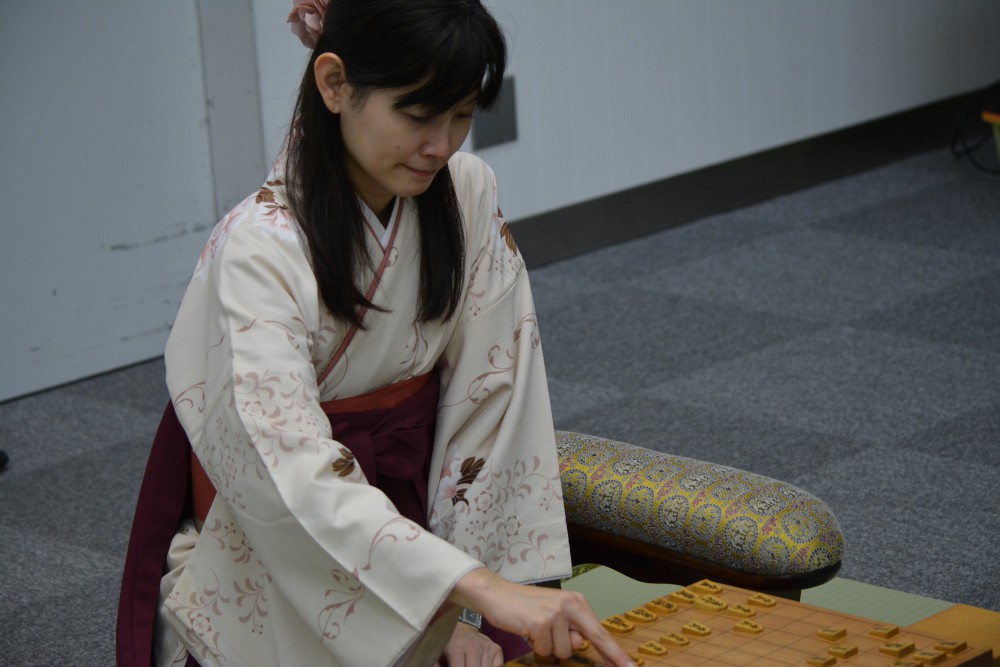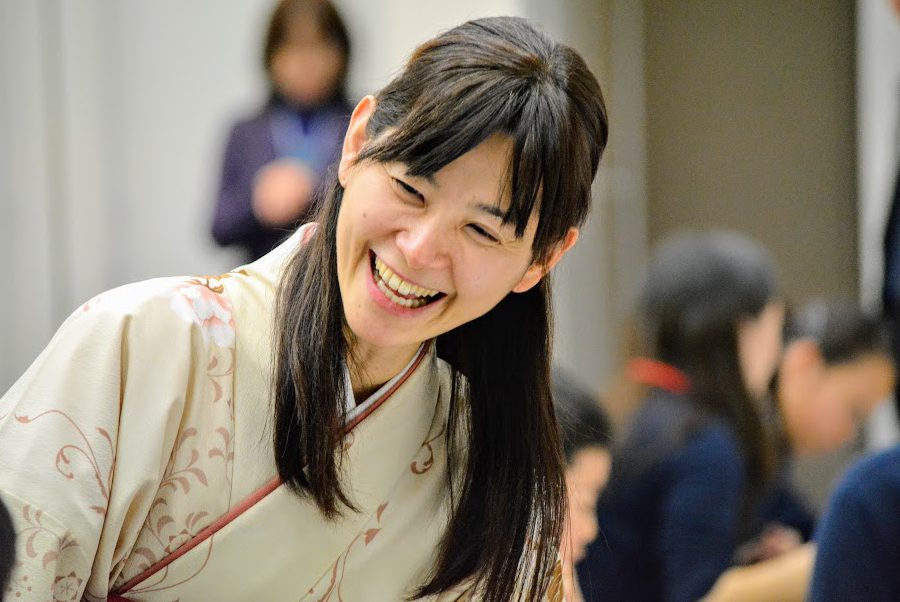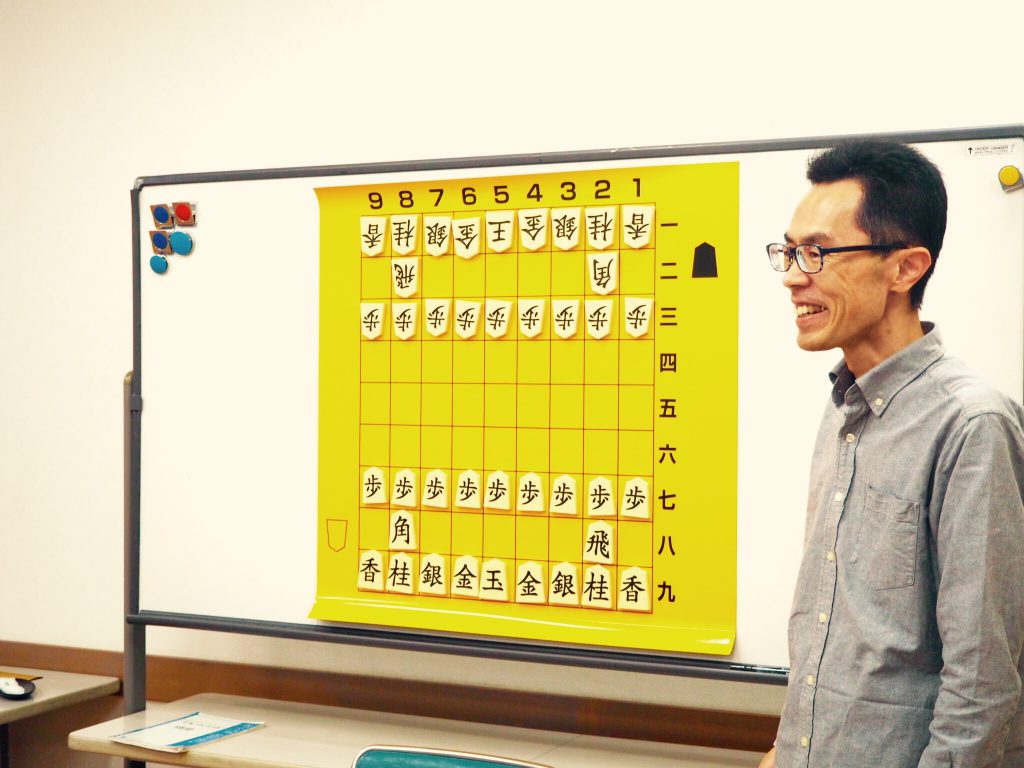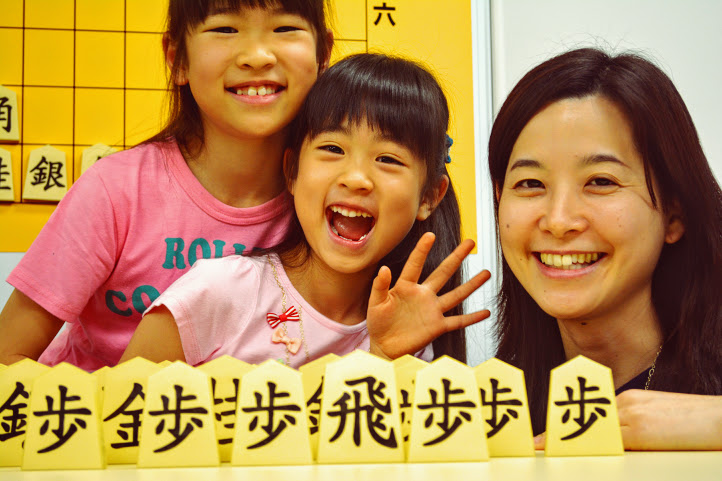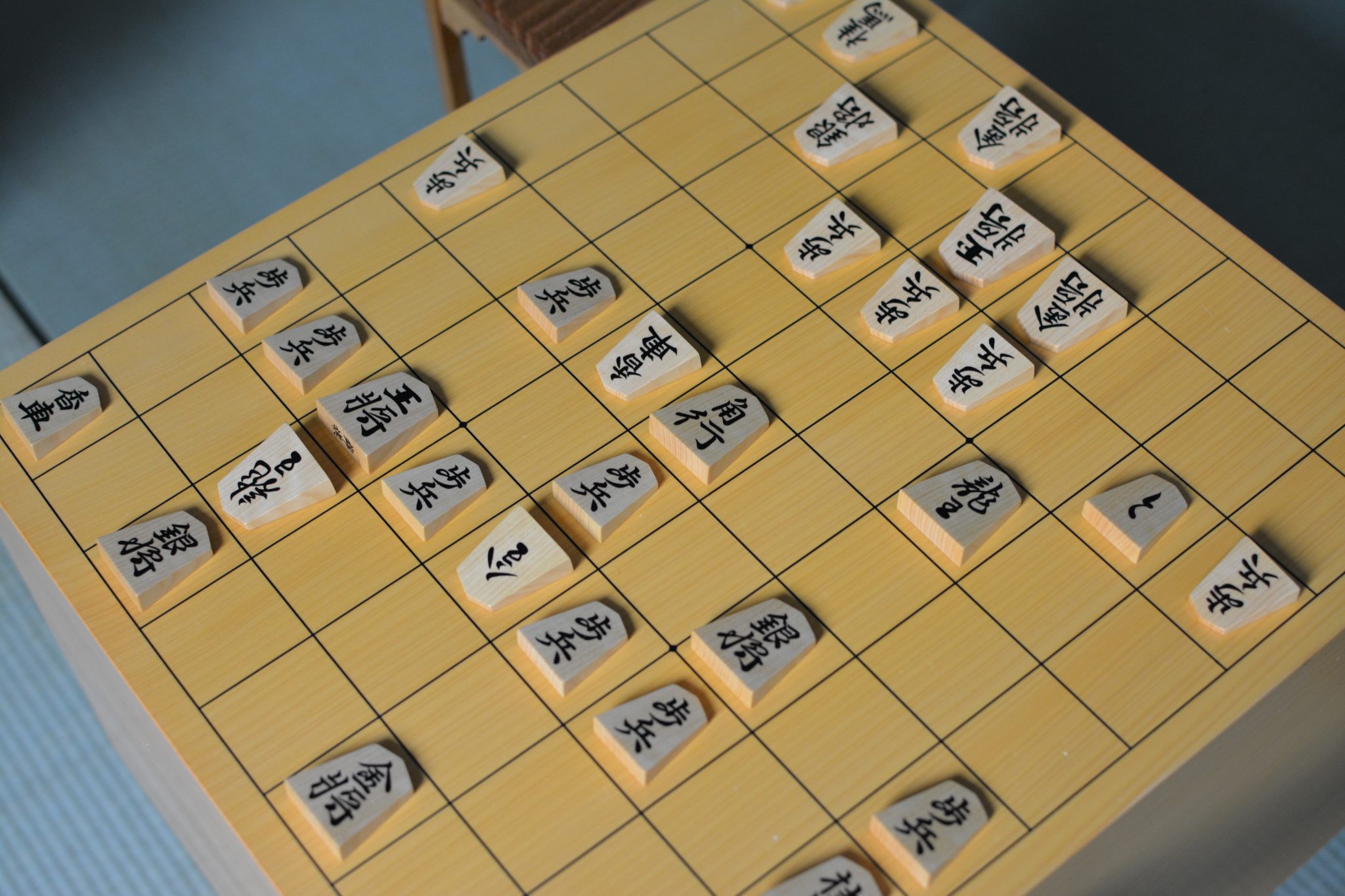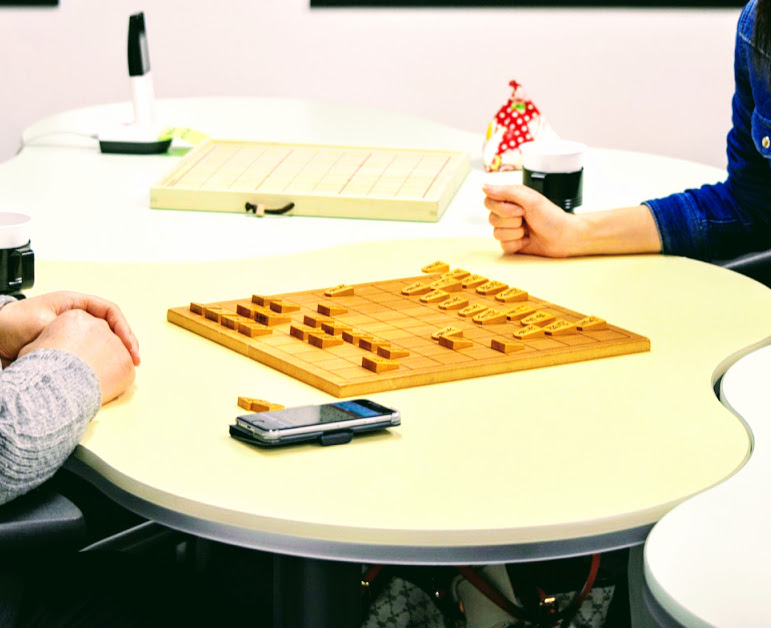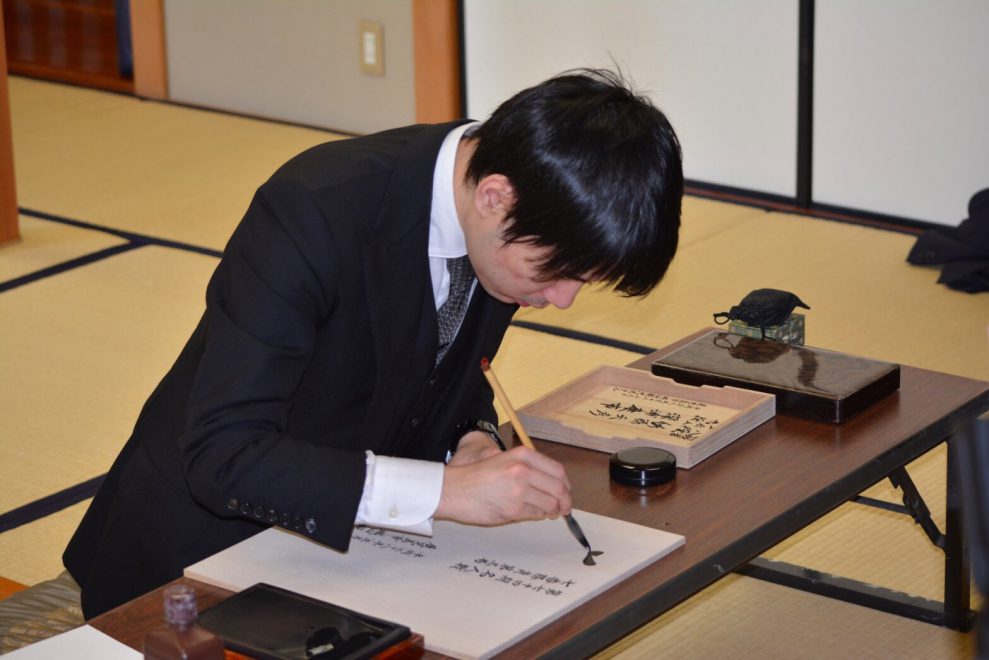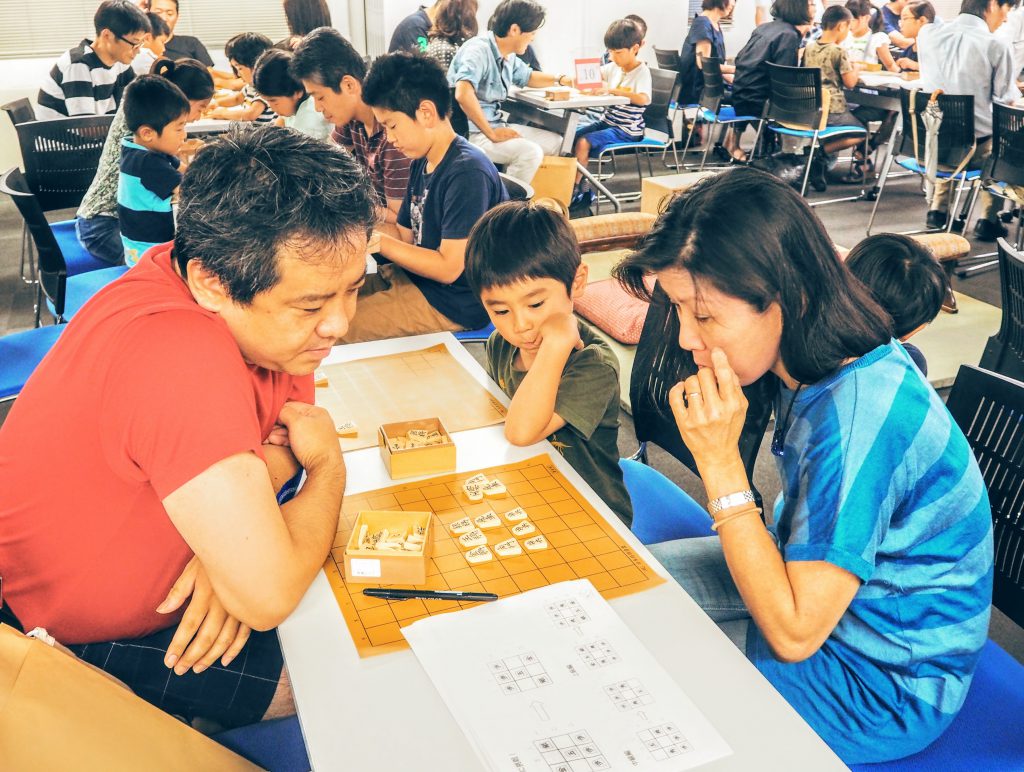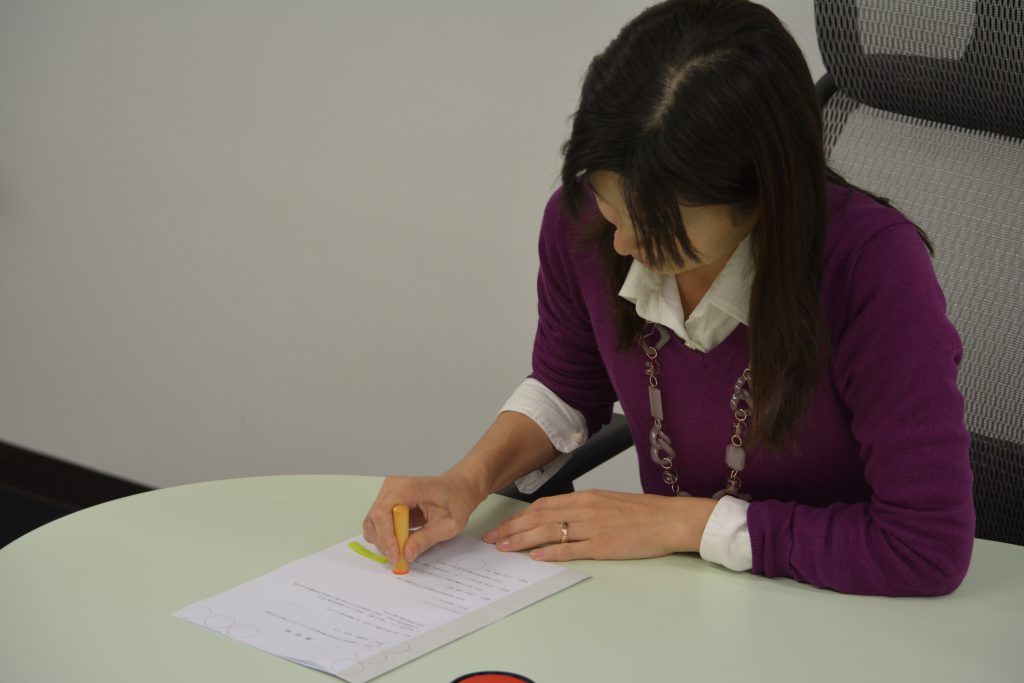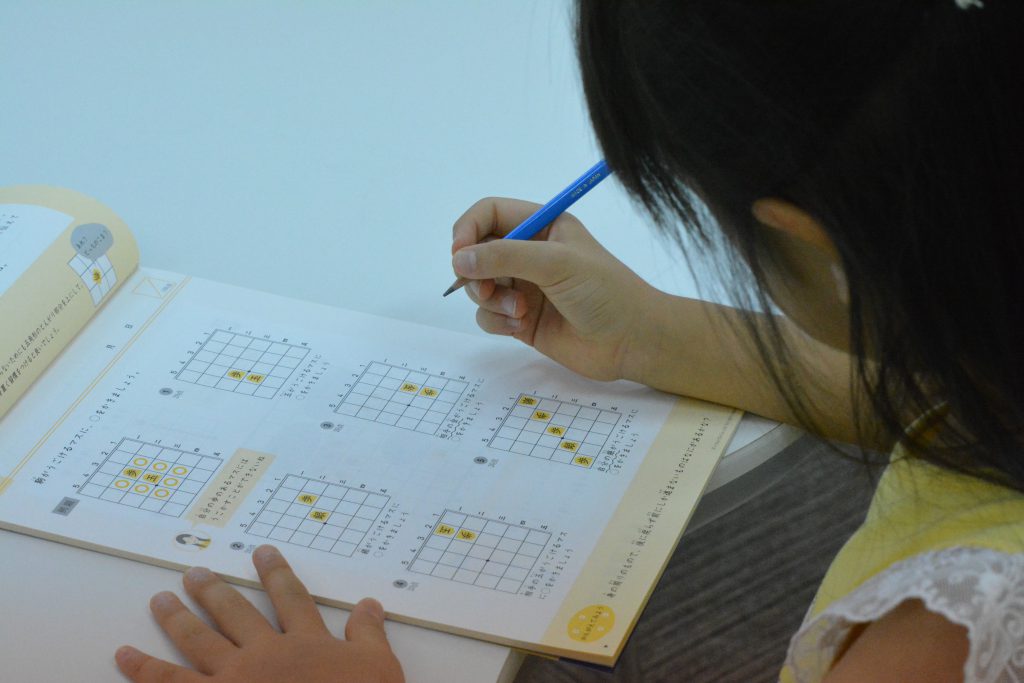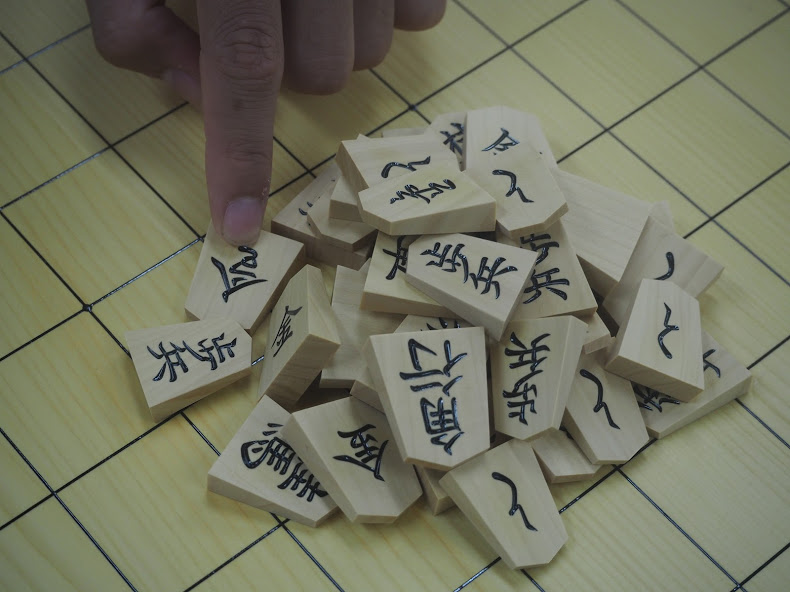I-tsu-tsu Blog
-
Shogi Rules: – How to Play Shogi – : Step 2-1 Moves of Kei/Keima (Knight) and Kyo/Kyosha (Lance)
Explore art of Shogi. A professional Shogi player invites you to the world of Shogi along with traditional Japanese culture. “Shogi Rules: – How to Play Shogi – “ is now available on the blog of I-tsu-tsu Co., Ltd. Even a novice player will be able to play a standard Shogi. There are three steps and one step has approximately 10-15 lessons. You will be able to play Mini Shogi and learn how to play standard Shogi with 9 x 9 squares. It is full of fun! The previous step Step 2-1 Moves of Kei/Keima (Knight) and Kyo/Kyosha (Lance) Let’s start Step 2 from today. Two more new pieces are introduced in
Akiko Nakakura 30 January 2017
-
Why Professional Shogi Players wear Kimono for Formal Occasions
“Sunday best clothes” is what we wear for important occasions. In the world of Shogi, similarly, there are matches where players dress differently. As you may already know, players wear Kimono for title matches. There is no official rule that players should wear Kimono for title matches. Nevertheless, most players, both males and females dress in Kimono by tacit consent for title matches. For your information, though Igo is also traditional Japanese culture, most Igo players wear suits for title matches, and ones in Kimono are minorities. Surely, male players look even more dignified and ladies appear to be far more gorgeous in Kimono. Wearing something special is a sign
Nae Kanamoto 30 January 2017
-
“I’m glad to have Shogi!” – Five Stories –
I asked five people of different professions to tell about what the good things to have Shogi in their lives. Today’s article is a kind of a collection of five “testimonies” to proof the benefits of Shogi. You will find a lot of good things in playing Shogi among their stories. 1. “You are never too old to play Shogi”: Natsume-san, a satellite Shogi-reporter. There are many good things about playing Shogi, but first of all, I have to go with the fact that we can enjoy Shogi at any age. I went to a Shogi practice hall when I was a student. There were all age groups to enjoy
Nae Kanamoto 30 January 2017
-
Five things that I, Akiko Nakakura bears in my mind when teaching Shogi to girls
Don’t you think that Shogi is for boys? Surely, many famous Shogi players such as Habu-san are males, and Shogi sounds cultured but not really gorgeous. However, girls start to show interest in Shogi gradually as comic books like “3-gates no raion (March comes in like a lion)” trigger their interests. I really sense that since quite a few girls attend our Shogi events. Nevertheless, boys are still the absolute majority in Shogi lessons and classes. Although girls are interested in Shogi, I am sure that they feel anxious entering boy dominant Shogi lessons. So, today, I would like to share things I keep in my mind when I teach
Akiko Nakakura 26 January 2017
-
Let’s Learn More About Meijin (Master) Title Match!
We often talk about I-tsu-tsu’s Shogi board and pieces on our blog. These equipments were actually used by Sato Amahiko, then the 8th Dan (a rank given to relatively high ranked players) and Yoshiharu Habu, then Meijin, at the 74th Meijin Title Match, the third Kyoku (suffix put behind a number to count games). We let children use these equipments at our Shogi events so that children would deepen their understanding about Shogi as traditional Japanese culture. However, I think children cannot understand the real meaning of our saying that “These are the Shogi equipments actually used at the Meijin Title Match,” since they play Shogi for the first time.
Nae Kanamoto 26 January 2017
-
An Interview with the President of Japan Chu Shogi (mid-sized Shogi) Association
We posted an article on Minase pieces the other day. Minase pieces were originally created for Chu Shogi (mid-sized Shogi), a Shogi variant, not for standard Shogi which is mostly played in the present time. Chu Shogi was born in the era of Muromachi, and noble people mainly enjoyed it in the era of Edo. Compered to the current standard Shogi, Chu Shogi has more squares on its board and more pieces. Also, the rule of reusable pieces (the drop rule) is not applicable. These are notable features of Chu Shogi. Today, we, I-tsu-tsu would like to introduce a standard Shogi lesson for children and also Chu Shogi lesson concurrently
Nae Kanamoto 24 January 2017
-
Enjoy a Lively Conversation with Your Children and Shogi
Playing catch has been classic for a father and children (boys in particular). This could be the case, even though there might be a little difference between the past and present. A parent and a child enjoy a game, throwing a ball back and forth to each other. Actions are quite simple and repeated and mostly after a game they seem to be refreshed. Probably, I got this image too strongly from a scene in a TV drama. I have noticed recently that playing catch has many things in common with Shogi. I would like to argue why I think so! The first, Shogi and playing catch are both played
Nae Kanamoto 24 January 2017
-
Behind the Scenes on the Previous Day of the Meijin Title Match
One Chinese character represents thoughts of the top of the Shogi world “Heart” and “Road” Yoshiharu Habu, Meijin, and Amahiko Sato, the 8th Dan (A kind of ranks given to relatively high-ranked players). These two players who fought on the third Kyoku of the 74th Shogi Meijin Title Match respectively wrote one Chinese character on the wooden board (below in the picture). On the previous day of title matches such as the Meijin Title Match, Shogi players personally wrote their favorite word on the Shogi board, pieces or other tools with a calligraphy brush. This activity is called “Kigou (traditional brush calligraphy written by a professional player).” In some cases,
Akiko Nakakura 24 January 2017
-
A Piece of Cake! Games You Can Learn Piece Moves–Shogi Puzzle–
We, I-tsu-tsu Co., Ltd., have held events named “Let’s take a glance at Shogi world!” aiming to make Shogi popular around Japan. Our present theme for our events is how to make Shogi familiar lowering the hurdle to start playing Hon-Shogi, or Standard Shogi as opposed to other shogi variants. We are working on this theme day in, day out. Speaking of Shogi, there are many things to learn before you become to enjoy Hon-Shogi: movements of eight kinds of pieces, prohibited rules (Kinji-te, in Shogi term), and such like. Even starting the first step, you need to remember a lot. We have been struggling on making the path to
Akiko Nakakura 24 January 2017
-
Words of Appreciation for Our First Fiscal Year
With your kind supports, we successfully closed our first year. We sincerely express our deep gratitude to all of you who have constantly and kindly supported us. The past one year really passed in the bank of an eye, and was exciting. Looking back the past year, I engaged in a wide range of activities as below: Lectures about parenting “Shogi event for parent and children” for those who had no interest in Shogi before Delivering blog messages on my visits to Shogi lessons and classes, my own experiences as a Shogi instructor for children, and so forth In August, we launched our original products. It took so much time
Akiko Nakakura 24 January 2017
-
An Easy Game with Shogi – Create a Formation with tactful “Kiki”–
It is quite difficult to master piece-movement and it’s ability, isn’t it? Once you memorize all of the pieces’ movements, you don’t feel it’s not very difficult thing. However, I notice there are many children who get confused with the difference between the movements of Gin (or Siliver) and Kin (or Gold) and with the movement of Kei (or Knight). Children are not to be blamed, since piece-movement abilities are quite virtual thing. Actually, it’s not easy to remember virtual movements. When you want to make invisible things visible in your imagination, you need decent amount of training. Then, I would like to introduce our original puzzles enhancing your understanding
Akiko Nakakura 23 January 2017
-
Easy Shogi Game–Yama-Kuzushi–
We have introduced games with our concept, “Learning the rules of piece-movements, let’s enjoy playing Shogi!” The other day, highlighted our actions including “Shogi Puzzle” and “Tag chasing a King”, we were introduced in a TV program titled “Shogi Focus.” We, I-tsu-tsu, have been working very hard on providing easier and more enjoyable way to enjoy Hon-Shogi. Hence, today I am going to introduce another fun game using Shogi pieces. It’s known as “Yama-Kuzushi” (Yama refers to as “mountain”, and Kuzushi means “to collapse” in English and some staff members call it “Shogi- Kuzushi”). Supposedly, this game might be the easiest among ones I’ve ever introduced, since you don’t need
Akiko Nakakura 23 January 2017
If there is anything we can help you with,or you have any questions,
please do not hesitate to contact us.
